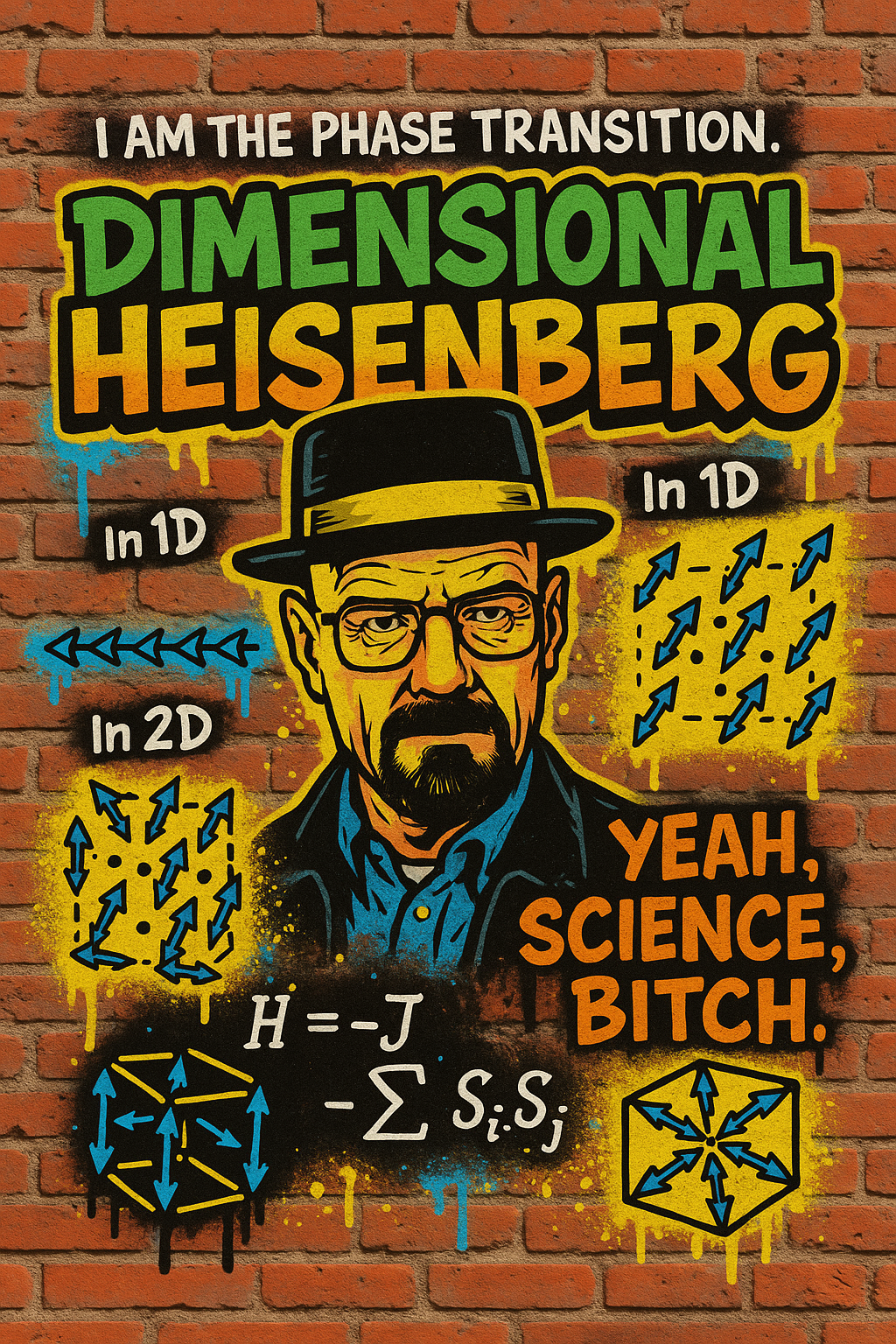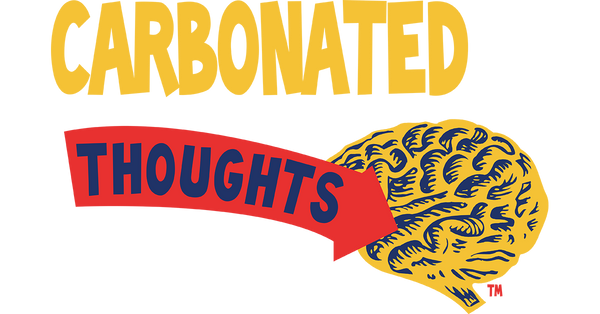
Dimensional Heisenberg Model with Heisenberg from Breaking Bad—science, magnetism, and meth all in one glorious mess:
Share
🧪💥🔬 "I AM THE PHASE TRANSITION."
– Dimensional Heisenberg, probably.
👨🔬 In 1D, I’m a chain reaction.
👨🔬 In 2D, I’m cooking on a hot plate in the desert.
👨🔬 In 3D, I break bad... with spontaneous magnetization.
🧲 Yeah, science, b*tch.
Walter White said he’s the danger—
But I’m the Hamiltonian that knocks:
H=−J⟨i,j⟩∑Si⋅Sj
You think that’s a dot product?
No.
That’s a spin cartel.
🧠 In the lab: "This isn't meth—it's quantum entanglement."
🚨 Schrödinger’s DEA raid is both happening and not until observed.
🧊 Remember:
-
In 1D, no long-range order.
-
In 2D, fluctuations cook the state.
-
In 3D, I crystallize into pure magnetic product.
So if someone asks you if you're in the spin-up or spin-down state,
you tell them:
💣 "I'm in superposition, b*tch."
THIS IS OF WAS INTENDED TO BE FUNNY. THE REAL SCIENCE IS BELOW:
Dimensional Heisenberg Model—a concept often referenced in condensed matter physics and quantum magnetism. I’ll guide you step by step, from the basics to more dimensional complexity.
🧠 1. The Basics: What is the Heisenberg Model?
The Heisenberg model describes how spins of electrons (tiny quantum magnets) interact with each other. It's used to model magnetism in materials. Each electron spin can be visualized like a tiny arrow pointing in some direction.
The Core Equation:
H=−J⟨i,j⟩∑Si⋅Sj
-
H = Hamiltonian (total energy of the system)
-
J = exchange constant (positive for ferromagnetism, negative for antiferromagnetism)
-
Si⋅Sj = dot product of spins at neighboring sites i and j
This equation says: spins prefer to align (if J>0) or anti-align (if J<0) to minimize the system's energy.
🌌 2. Dimensions Matter: 1D, 2D, 3D Heisenberg Models
The "Dimensional" aspect refers to how the spins are arranged in space:
🔸 1D Heisenberg Model
-
Spins arranged in a line (chain).
-
Special behaviors arise due to quantum effects.
-
In 1D quantum fluctuations dominate, preventing long-range order at finite temperature.
-
Key result: Bethe Ansatz (exact solution in 1931).
🔸 2D Heisenberg Model
-
Spins sit on a 2D lattice (like a grid).
-
Relevant for high-temperature superconductors (e.g., CuO₂ planes).
-
No long-range magnetic order at finite temperature (Mermin-Wagner theorem), but strong short-range correlations.
🔸 3D Heisenberg Model
-
Spins live on a 3D lattice (like a cube of atoms).
-
Exhibits true magnetic phase transitions at a critical temperature.
-
Can show spontaneous magnetization (like ferromagnetism) as temperature decreases.
🔮 3. Quantum vs Classical Heisenberg Models
-
Classical Model: Spins are treated as vectors in 3D space.
-
Quantum Model: Spins are operators, obeying quantum commutation rules.
-
For spin-½: Sx,Sy,Sz follow Pauli matrix algebra.
-
Leads to entanglement and non-classical ground states.
-
🧊 4. Key Concepts and Phenomena
✨ Spin Waves (Magnons)
-
In ordered systems, small deviations from perfect alignment propagate like waves.
-
These are quantized excitations: magnons.
❌ No Order in 1D and 2D (at finite T)
-
Mermin-Wagner theorem forbids spontaneous continuous symmetry breaking in 1D or 2D at finite temperature.
🌈 Quantum Phase Transitions
-
In low-dimensional Heisenberg systems, ground states can shift dramatically due to tuning parameters like magnetic field or pressure—without changing temperature.
🧬 5. Variants and Extensions
-
Anisotropic Heisenberg Models (XXZ, XYZ): different coupling in different directions.
-
Frustrated Heisenberg Models: lattice geometries like triangles where spins can’t all align/anti-align perfectly.
-
Random Heisenberg Chains: add disorder to see localization, quantum chaos, etc.
🧭 6. Why It Matters
The dimensional Heisenberg model is central to our understanding of magnetism, quantum materials, and critical phenomena.
Applications include:
-
Quantum computers (qubits = spins)
-
High-Tc superconductors
-
Spintronics
-
Exotic phases like quantum spin liquids
🧑🏫 Summary Table
| Dimension | Behavior | Order at T > 0 | Comments |
|---|---|---|---|
| 1D | Strong quantum effects | ❌ No | Exactly solvable (Bethe Ansatz) |
| 2D | Critical fluctuations | ❌ No (at finite T) | Important for cuprates |
| 3D | Classical/Quantum order | ✅ Yes | Real magnets live here |
